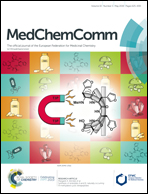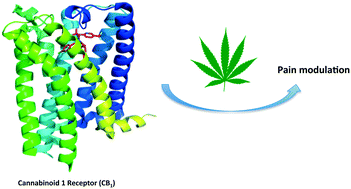 “The anti-depressant effect of repetitive transcranial magnetic stimulation (rTMS), a clinically-useful treatment for depression, is associated with changes to the endocannabinoid system (ECS).
“The anti-depressant effect of repetitive transcranial magnetic stimulation (rTMS), a clinically-useful treatment for depression, is associated with changes to the endocannabinoid system (ECS).
However, it is currently unknown whether different frequencies of rTMS alter the ECS differently. To test this, rats exposed to chronic unpredictable stress (CUS) were treated with rTMS at two different frequencies (5 (high) or 1 Hz (low), 1.26 Tesla) for 7 consecutive days.
Interestingly, we found that only high-frequency rTMS ameliorated depressive-like behaviors and normalized the expression of hippocampal synaptic proteins in CUS-treated rats;
Collectively, our results suggest that high-frequency rTMS exerts its anti-depressant effect by up-regulating diacylglycerol lipase alpha (DAGLα) and cannabinoid type 1 receptor (CB1R).”
https://www.ncbi.nlm.nih.gov/pubmed/31229467
https://www.sciencedirect.com/science/article/pii/S0091305719301376?via%3Dihub

“Transcranial magnetic stimulation (TMS), also known as repetitive transcranial magnetic stimulation (rTMS), is a noninvasive form of brain stimulation in which a changing magnetic field is used to cause electric current at a specific area of the brain through electromagnetic induction. An electric pulse generator, or stimulator, is connected to a magnetic coil, which in turn is connected to the scalp. The stimulator generates a changing electric current within the coil which induces a magnetic field; this field then causes a second inductance of inverted electric charge within the brain itself. Adverse effects of TMS are rare, and include fainting and seizure. Other potential issues include discomfort, pain, hypomania, cognitive change, hearing loss, and inadvertent current induction in implanted devices such as pacemakers or defibrillators” https://www.sciencedirect.com/science/article/pii/S0091305719301376?via%3Dihub

 “Omega-3 fatty acid derived endocannabinoids are metabolized by cytochrome P450s to form bioactive endocannabinoid epoxides that are anti-inflammatory.
“Omega-3 fatty acid derived endocannabinoids are metabolized by cytochrome P450s to form bioactive endocannabinoid epoxides that are anti-inflammatory.

 “The endocannabinoid system is an endogenous pathway comprised of the cannabinoid receptors 1 and 2 (CB1 and CB2), their endogenous ligands known as endocannabinoids, and the enzymes responsible for their synthesis and degradation. The endocannabinoidome extends this system to include other receptors such as TRPV1, PPARα, GPR55 and 5-HT1A. An extensive amount of research is now linking the endocannabinoidome to intestinal health through fascinating mechanisms that include endocannabinoid receptor expression in the gut and interplay with the intestinal microbiota. A dysregulated endocannabinoid system may lead to inflammatory bowel disease and colon cancer.”
“The endocannabinoid system is an endogenous pathway comprised of the cannabinoid receptors 1 and 2 (CB1 and CB2), their endogenous ligands known as endocannabinoids, and the enzymes responsible for their synthesis and degradation. The endocannabinoidome extends this system to include other receptors such as TRPV1, PPARα, GPR55 and 5-HT1A. An extensive amount of research is now linking the endocannabinoidome to intestinal health through fascinating mechanisms that include endocannabinoid receptor expression in the gut and interplay with the intestinal microbiota. A dysregulated endocannabinoid system may lead to inflammatory bowel disease and colon cancer.”

 “Mammalian ω3- and ω6-PUFAs are synthesized from essential fatty acids (EFAs) or supplied by the diet. PUFAs are constitutive elements of membrane-architecture and precursors of lipid signaling molecules. EFAs and long chain PUFAs are precursors in the synthesis of endocannabinoid-ligands of the Gi/o-protein coupled cannabinoid receptors 1 and 2 in the endocannabinoid-system, which critically regulates energy homeostasis, as metabolic signaling system in hypothalamic neuronal circuits, and behavioral parameters. We utilized the auxotrophic fatty acid desaturase 2 deficient (fads2-/-) mouse, deficient in long chain PUFA-synthesis, to follow the age dependent dynamics of the PUFA pattern in the CNS-phospholipidome in unbiased dietary studies of three cohorts on sustained long chain PUFA-free, ω6-arachidonic and ω3-docosahexaenoic acid supplemented diets and their impact on the precursor pool of CB1 ligands. We discovered the transformation of eicosa-all cis-5,11,14-trienoic acid, uncommon in mammalian lipidomes, into two novel endocannabinoids, 20:35,11,14-ethanolamide and 2-20:35,11,14-glycerol, acting as ligands of CB1 in HEK293-cells. Labeling experiments excluded a Δ8-desaturase activity and proved the position-specificity of FADS2. The fads2 -/- mutant might serve as an unbiased model in vivo in the development of novel CB1-agonists and antagonists.”
“Mammalian ω3- and ω6-PUFAs are synthesized from essential fatty acids (EFAs) or supplied by the diet. PUFAs are constitutive elements of membrane-architecture and precursors of lipid signaling molecules. EFAs and long chain PUFAs are precursors in the synthesis of endocannabinoid-ligands of the Gi/o-protein coupled cannabinoid receptors 1 and 2 in the endocannabinoid-system, which critically regulates energy homeostasis, as metabolic signaling system in hypothalamic neuronal circuits, and behavioral parameters. We utilized the auxotrophic fatty acid desaturase 2 deficient (fads2-/-) mouse, deficient in long chain PUFA-synthesis, to follow the age dependent dynamics of the PUFA pattern in the CNS-phospholipidome in unbiased dietary studies of three cohorts on sustained long chain PUFA-free, ω6-arachidonic and ω3-docosahexaenoic acid supplemented diets and their impact on the precursor pool of CB1 ligands. We discovered the transformation of eicosa-all cis-5,11,14-trienoic acid, uncommon in mammalian lipidomes, into two novel endocannabinoids, 20:35,11,14-ethanolamide and 2-20:35,11,14-glycerol, acting as ligands of CB1 in HEK293-cells. Labeling experiments excluded a Δ8-desaturase activity and proved the position-specificity of FADS2. The fads2 -/- mutant might serve as an unbiased model in vivo in the development of novel CB1-agonists and antagonists.” “Bipolar disorder (BD) is a debilitating, lifelong neuropsychiatric illness characterised by unsteady mood states which vacillate from (hypo)mania to depression. Despite the availability of pharmaceutical agents which can be effective in ameliorating the acute affective symptoms and prevent episodic relapse, BD is inadequately treated in a subset of patients.
“Bipolar disorder (BD) is a debilitating, lifelong neuropsychiatric illness characterised by unsteady mood states which vacillate from (hypo)mania to depression. Despite the availability of pharmaceutical agents which can be effective in ameliorating the acute affective symptoms and prevent episodic relapse, BD is inadequately treated in a subset of patients. “Currently, the involvement of the endocannabinoid system in cancer development and possible options for a cancer-regressive effect of
“Currently, the involvement of the endocannabinoid system in cancer development and possible options for a cancer-regressive effect of